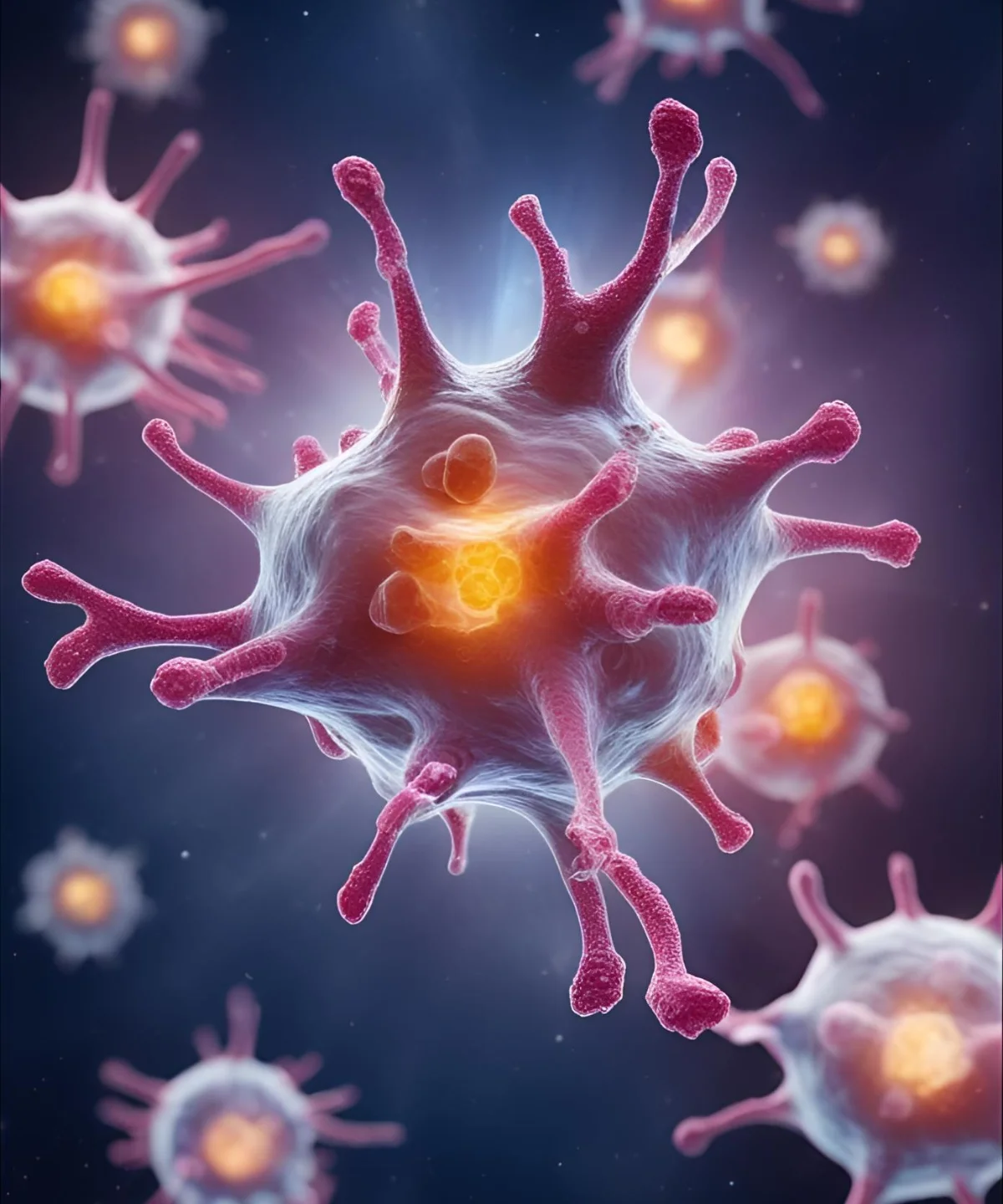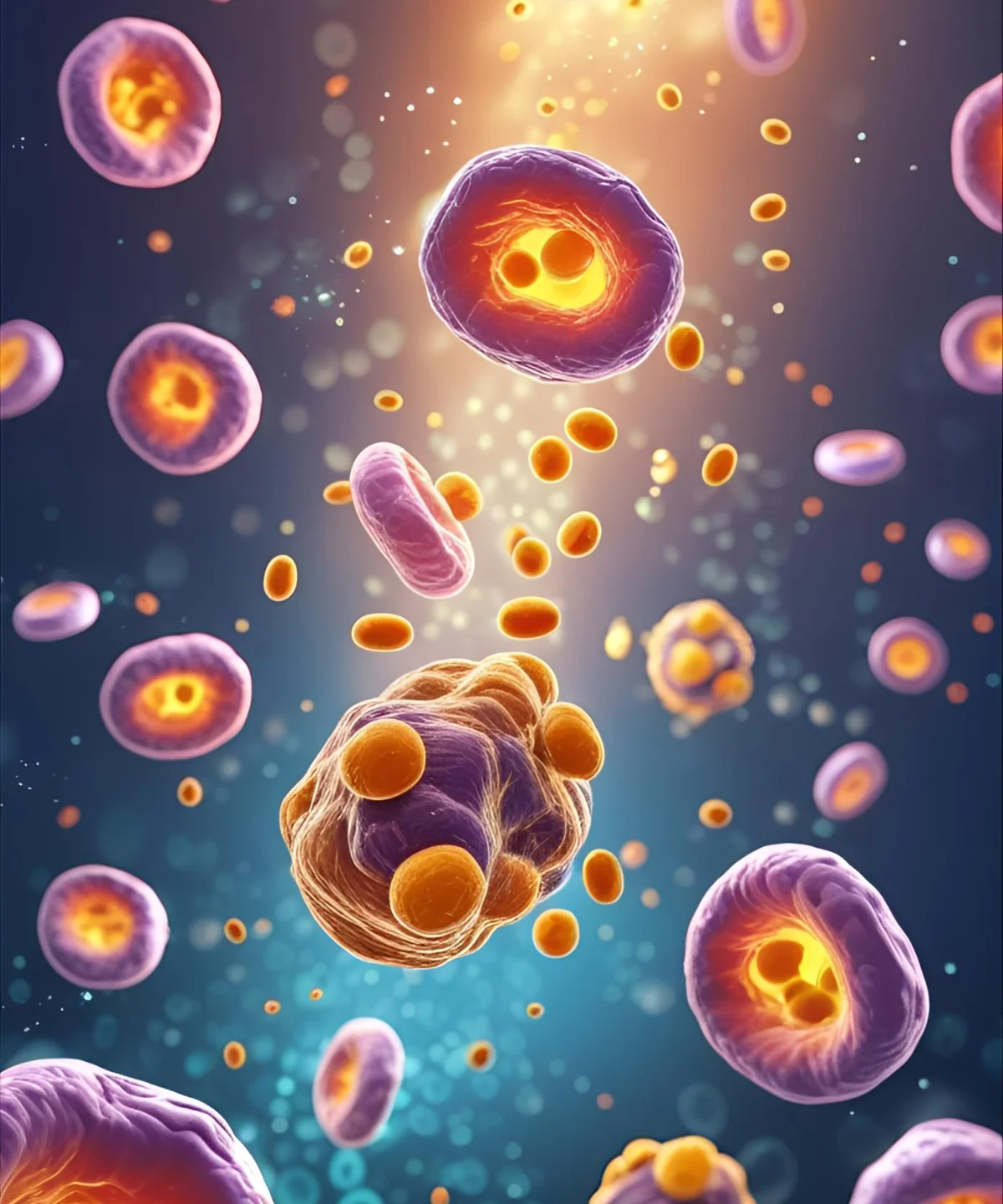Mesenchymal Stem Cell Differentiation: Pathways, Markers, and Clinical Relevance
Mesenchymal stem cells (MSCs) are a type of multipotent stem cell capable of self-renewal and differentiation into various mesodermal lineages. Originally derived from the mesodermal germ layer during embryonic development, MSCs play a central role in tissue maintenance, repair, and immune modulation in the adult body.
MSCs are found in several tissues, including bone marrow (BM-MSCs), adipose tissue (ADSCs), and umbilical cord (UC-MSCs)—each source offering distinct biological characteristics and therapeutic advantages. Their ability to both proliferate and adapt, known as stem cell plasticity, makes them especially valuable in regenerative medicine and clinical research supported by institutions like the NIH.
A hallmark of MSC function is their trilineage differentiation potential, meaning they can develop into three primary cell types:
This diverse differentiation capacity underpins their widespread use in orthopedic, dental, dermatological, and immunological applications, driving continued research into mesenchymal stem cell development and therapeutic deployment.

The MSC Lineage Commitment Process
Lineage commitment is the biological process where mesenchymal stem cells (MSCs) begin to specialize into specific cell types, such as osteoblasts, chondrocytes, or adipocytes. Once an MSC enters a committed pathway, its cell fate is determined, and it loses the ability to become other cell types. This step is critical in both natural tissue development and engineered regenerative therapies.
Role of Microenvironment and Niche Signaling
MSCs do not differentiate in isolation. Their fate is strongly influenced by the stem cell niche—a complex network of signals from surrounding stromal cells, cytokines, and extracellular matrix proteins. These mesenchymal tissue environments guide MSC behavior, signaling the cell to activate lineage-specific genes based on local needs.
In Vitro vs. In Vivo MSC Differentiation
In in vitro differentiation, MSCs are exposed to artificial conditions—like growth factors or chemical inducers—to drive their specialization. While this offers control and reproducibility, it does not fully replicate the complexity of real tissue environments. In contrast, in vivo differentiation occurs naturally within the body, shaped by dynamic, multi-factorial signals from the surrounding microenvironment. Understanding this difference is key for translating lab findings into real-world therapeutic outcomes.
Influence of Mechanical and Environmental Cues
Biophysical factors also play a major role in MSC lineage commitment. For example:
– Substrate stiffness influences differentiation—rigid surfaces favor osteogenic pathways, while softer substrates support adipogenic fate.
– Oxygen levels affect lineage selection—hypoxia can promote chondrogenesis.
– Mechanical forces such as pressure or tension mimic in vivo conditions and influence stem cell response.
These insights are now guiding the design of smarter biomaterials and scaffolds in tissue engineering. Organizations like the International Society for Cell & Gene Therapy (ISCT) emphasize the need for standardized protocols in MSC research. Consistent definitions of lineage commitment, especially in clinical-grade MSCs, are essential for regulatory compliance and safe therapeutic use.
Key Differentiation Pathways and Signaling Cascades
Mesenchymal stem cells (MSCs) rely heavily on paracrine signaling to receive instructions from their surrounding environment. These signals—secreted by nearby cells—activate internal pathways that guide MSCs toward specific lineages such as bone, cartilage, or fat. This cell-to-cell communication plays a critical role in both natural tissue development and lab-induced differentiation.
Wnt/β-Catenin Pathway – Osteogenic Differentiation
The Wnt signaling pathway, particularly the Wnt/β-catenin cascade, is a key regulator of osteogenic differentiation. Activation of this pathway leads to the stabilization of β-catenin, which in turn promotes the expression of osteogenesis-related genes like Runx2.
– Wnt3a, a well-known ligand in this pathway, has been widely used to enhance bone formation in vitro.
– This pathway is also sensitive to mechanical cues and substrate stiffness, making it crucial in bone tissue engineering.
TGF-β/Smad Pathway – Chondrogenic Differentiation
The TGF-β (Transforming Growth Factor Beta) pathway, particularly the TGF-β/Smad signaling cascade, plays a central role in chondrogenesis. When activated, Smad proteins translocate into the nucleus and trigger the expression of cartilage-specific genes such as Sox9 and COL2A1.
– This pathway is widely used in cartilage regeneration models and is a foundation for in vitro chondrogenic protocols.
BMP Signaling – Multilineage Differentiation
Bone Morphogenetic Proteins (BMPs), particularly BMP-2, are powerful inducers of both osteogenic and chondrogenic differentiation. BMPs bind to their receptors and initiate transcription via Smad1/5/8, influencing downstream gene expression.
– BMP-2 is commonly used in both bone and cartilage engineering studies for MSC differentiation.
Notch and MAPK Pathways – Context-Dependent Modulation
The Notch signaling pathway regulates MSC self-renewal and influences differentiation depending on context. It plays a balancing role—often delaying differentiation to maintain stemness until the right cues are present.
– The MAPK (Mitogen-Activated Protein Kinase) cascade, on the other hand, supports various differentiation outcomes and can synergize with other pathways like Wnt and TGF-β depending on stimuli such as growth factors and stress signals.
Intrinsic vs. Extrinsic Regulation of MSC Fate
MSCs respond to both intrinsic transcription factors and extrinsic signals from their niche. While internal gene networks define their baseline potential, it’s the combination with external signaling—through molecules like TGF-β, Wnt3a, BMP-2, and FGF-2—that determines their final differentiation fate. Understanding this interaction is critical for designing successful MSC-based therapies.
Lineage-Specific Differentiation and Key Transcription Factors
As multipotent cells, mesenchymal stem cells (MSCs) have the ability to differentiate into multiple tissue-specific lineages. Among these, osteogenic, chondrogenic, and adipogenic pathways are the most well-characterized. Each lineage is regulated by a distinct set of transcription factors and signaling cascades that guide MSCs into specialized cell types with therapeutic applications.
Osteogenic Differentiation
Osteogenic differentiation is the process by which MSCs become osteoblasts, the bone-forming cells essential for skeletal development and repair. This lineage is primarily regulated by the transcription factor Runx2, which initiates the expression of osteogenic genes such as alkaline phosphatase (ALP) and collagen type I alpha 1 (COL1A1).
In laboratory settings and NIH-supported clinical trials, MSCs are cultured under osteoinductive conditions to encourage mineral deposition and bone matrix production. This process plays a vital role in bone tissue engineering and is used in orthopedic and dental applications for fracture healing, bone grafting, and maxillofacial reconstruction.
Chondrogenic Differentiation
In chondrogenic differentiation, MSCs are directed to become chondrocytes, the cells responsible for producing cartilage. The master regulator of this process is Sox9, which activates genes like Aggrecan and collagen type II (COL2A1)—critical for cartilage matrix formation.
This pathway is particularly valuable in regenerative treatments for osteoarthritis, cartilage injuries, and degenerative joint diseases. Growth factors such as TGF-β enhance chondrogenesis by triggering the Smad signaling pathway, making this lineage one of the most promising for cartilage repair models.
Adipogenic Differentiation
The adipogenic lineage allows MSCs to differentiate into adipocytes, or fat cells, which are essential for energy storage and endocrine function. This pathway is controlled by transcription factors such as PPARγ (Peroxisome proliferator-activated receptor gamma) and FABP4 (Fatty acid-binding protein 4), which initiate the storage of lipids and formation of fat droplets.
Adipose-derived stem cells (ADSCs) are often used due to their natural abundance and high adipogenic potential. This form of differentiation is widely utilized in metabolic research, soft tissue engineering, and cosmetic applications such as facial fat grafting and body contouring.

Advanced Differentiation Potentials Beyond Trilineage
While mesenchymal stem cells (MSCs) are primarily known for their trilineage differentiation into osteogenic, chondrogenic, and adipogenic lineages, emerging evidence suggests that MSCs may also possess the ability to differentiate into non-mesodermal cell types under specific conditions. These include myogenic (muscle-forming) and neurogenic (nerve-forming) pathways—broadening their potential use in regenerative medicine.
Studies have shown that MSCs can express neurogenic markers and adopt neuron-like morphologies when exposed to electrical stimulation, chemical inducers, or growth factor cocktails. This process, often referred to as transdifferentiation, opens doors for experimental treatments in neurodegenerative disorders such as Parkinson’s and spinal cord injury. Similarly, under the influence of specific myogenic cues, MSCs have shown potential to support muscle regeneration in models of muscular dystrophy or trauma.
However, the true multipotency of MSCs beyond their mesodermal lineage remains controversial. Critics argue that observed neuron- or muscle-like traits in vitro may not translate into functional integration in vivo. Furthermore, gene editing technologies like CRISPR-MSCs are being explored to enhance differentiation fidelity, but this raises additional ethical and regulatory concerns.
Despite these limitations, the plasticity of MSCs continues to be a subject of intense research. Unlocking their myogenic and neurogenic potential could significantly expand their clinical utility in fields previously considered outside their therapeutic scope.
Laboratory Methods for Assessing MSC Differentiation
Evaluating the differentiation of mesenchymal stem cells (MSCs) in the laboratory is crucial for validating their multipotency and therapeutic viability. Researchers employ standardized in vitro differentiation protocols to direct MSCs into specific lineages and confirm their commitment using visual, molecular, and biochemical methods.
In Vitro Differentiation Assays
To assess lineage-specific outcomes, MSCs are cultured in inductive media tailored for:
– Osteogenesis (bone): supplemented with dexamethasone, β-glycerophosphate, and ascorbic acid
– Chondrogenesis (cartilage): includes TGF-β and insulin-transferrin-selenium
– Adipogenesis (fat): uses IBMX, insulin, and indomethacin
Lineage-Specific Staining Techniques
Histological stains are applied to detect lineage-specific extracellular deposits:
Alizarin Red – binds calcium deposits in osteogenic cultures
Oil Red O – stains lipid droplets in adipogenic cells
Alcian Blue – identifies sulfated proteoglycans in cartilage matrix
These staining methods remain gold standards for MSC differentiation assays.
Gene and Protein Expression Analysis
To further validate differentiation, researchers use:
qPCR (quantitative polymerase chain reaction) – measures mRNA expression of key transcription factors:
– Runx2 for osteogenic lineage
– Sox9 for chondrogenic lineage
– PPARγ for adipogenic lineage
– Western blotting and immunostaining methods – confirm corresponding protein expression
– ALP (alkaline phosphatase) activity assay – used as a biochemical marker of early osteogenesis
These molecular assays ensure that observed phenotypic changes are backed by transcriptional activation of lineage-specific genes, which is critical in stem cell validation and translational studies.
Clinical Applications and Regenerative Potential
The clinical potential of differentiated mesenchymal stem cells (MSCs) lies in their ability to regenerate damaged tissues across bone, cartilage, and fat. Their versatility makes them a cornerstone of emerging regenerative therapies and tissue engineering solutions.
Osteogenically differentiated MSCs are widely used in bone repair, including spinal fusion, non-union fractures, and dental reconstruction.
Chondrogenic MSCs support cartilage regeneration in conditions like osteoarthritis, reducing inflammation and delaying joint replacement.
Adipogenic MSCs play a role in fat grafting, soft tissue augmentation, and reconstructive surgery, especially post-injury or post-surgical defects.
Advanced treatments combine MSCs with bioprinting, scaffold therapy, and smart biomaterials to enhance structural integration and healing.
MSC-derived exosomes are emerging as a cell-free therapy, offering anti-inflammatory and regenerative effects with greater safety and scalability.
Clinical development is supported by ongoing trials listed on ClinicalTrials.gov, under regulatory oversight from agencies like the FDA, accelerating the path to approved MSC regenerative therapies.
Challenges and Standardization in MSC Differentiation
Despite the growing use of mesenchymal stem cells (MSCs) in regenerative medicine, several challenges hinder consistent differentiation outcomes. One major issue is donor variability, where the age, health status, and tissue source of the donor can affect the MSCs’ capacity to differentiate. Cellular aging further impacts functionality, especially in autologous therapies.
A key limitation in current research and clinical translation is the lack of standardized MSC differentiation protocols. Variations in culture conditions, reagents, and assay techniques result in poor reproducibility, making it difficult to compare results across studies or ensure consistent therapeutic efficacy.
To address this, there is a growing need for GMP-grade MSC production that meets Good Manufacturing Practice (GMP) compliance standards. This includes using validated materials, controlled environments, and documentation to produce clinical-grade cells safely and reliably.
Moreover, navigating the global regulatory landscape is complex. Agencies like the FDA (U.S.), EMA (Europe), and ISO bodies have introduced evolving guidelines for MSC-based products, but international harmonization remains a work in progress. As the field advances, aligning with GMP-certified labs and adopting globally recognized protocols will be critical for scalable and safe MSC therapies.
